Masking with The Photoshop Pen Tool
Creating a good mask is one of the essential skills in compositing images within Photoshop. Recognizing the right tool for the masking job is an art in itself. Today, we’ll look at an often overlooked, but highly effective way of creating a very good mask – using the Pen Tool in Photoshop.
Let’s consider this image:
We want to extract the lizard from a seemingly simple background. So, why not go to the “go-to” tool for starting a mask – the Quick-Select tool (W). After all, with the great new Adobe technology, the Quick-Select tool can perform small miracles. Grab it and start dragging to select the image:
After dragging out a selection in the inside of the lizard’s body, we have the beginnings of a selection that can become a mask. But, let’s look closer:
Looking closely, we can see that the edge isn’t as smooth as we’d hoped. There are several places where the selection tool under- or over- selected, and the edges are a bit lumpy. We’re missing the “holes” in the middle, too. Let’s hold the Alt (PC) or Option (Mac) key down to subtract from the selection and paint in the gaps:
Again, not bad, but not real good either. A few more passes of the quick-select tool, and we’ll have something “ok” but not something great. The shadows around the edge of the lizard really interfere with the Quick-Select tool and can cause it to create irregular boundaries. We can continue tweaking, adding and subtracting as we go, and then even go on to Refine Selection – and burn a lot of time trying to finalize our mask. But due to the way these tools work, we’ll still end up with an edge that wants to be a little rough and organic. This is great for soft edged objects, but sometimes, you want a really crisp, razor edge to your mask.
Enter the Pen Tool.
Now, don’t be scared off – the pen tool takes some getting used to, but it really isn’t all that difficult (you can find many excellent tips on using the Pen Tool right here on TipSquirrel). But, here’s what to do if you have a target that has (or should have) clean edges:
- First, grab the Pen Tool (P) and make sure the toolbar option is set to create a Path (not pixels or shapes). Then, zoom in quite closely to start dragging out your path.
- As you draw, try not to create too many points. Lots of points make a jagged path, fewer points will make gently curving paths with really clean lines.
- Stay zoomed in close – try to keep the path at least 1-2 pixels inside the edge of the object you’re selecting, so that you don’t have a fringe of color. Staying inside the edge is better than going out of bounds, as the fringe will be noticeable.
- Use the Space Bar to momentarily switch to the hand tool, and drag your drawing around as you create your path.
- If you get a point in the wrong place, hold down the Control (PC) or Command (Mac) key to temporarily switch to the white arrow tool, and drag your points into better position. You can also adjust the control handles the same way.
- If you edit one of the points you already drew, you can hover over the last point on the path a(the pen cursor will change so that you see a stroke “/” icon next to it) and click the last point – you can now continue where you left off:
Once you have the outline complete, click on the first point to complete the loop and finish the path. The pen cursor changes again so that you see a “O” icon, indicating that you will close the path:
Now, it’s time to add the interior sections.Make sure the [en tool option to Exclude Overlapping Shape Areas is selected (or for simple paths such as this, Subtract Front Shape Area will do). Now draw in the “holes’” with additional paths:
The great thing about the path tool is its ability to make smooth lines, even when the edges of your object are ragged or out of focus.
Once you have your path created, you have a couple of choices:
- In any version of Photoshop, you can open the Paths panel, and Control Click (PC) or Command Click (Mack) to load the path as a selection.
- In CS6 (new) you can click on the Selection… button in the Toolbar of the Pen Tool. This brings up a dialog:
In this case, we don’t want a feathered edge, so we’ll just accept the default and click OK. The marching ants appear, and we have our selection:
Now, in the Layers panel, just click the Add Layer Mask icon to mask our object from the background:
And the image is masked, nice and clean:
If we zoom in closer, we can see that the edges are as clean as you can get given the resolution of the image, thanks to the smooth paths:
So if you’re looking to select or mask an object that has a clean edge, consider the Pen Tool. With a little practice, you’ll find this can be much more effective at getting sharp edges and nice corners compared to the quick-select tool or similar methods. And, more often than not, you’ll save time, because you won’t be going back to try to refine your selection over and over.
I hope you learned something from today’s tip! Next week, we’ll look at combining selections made by a path with selections made in other ways. Stay tuned!




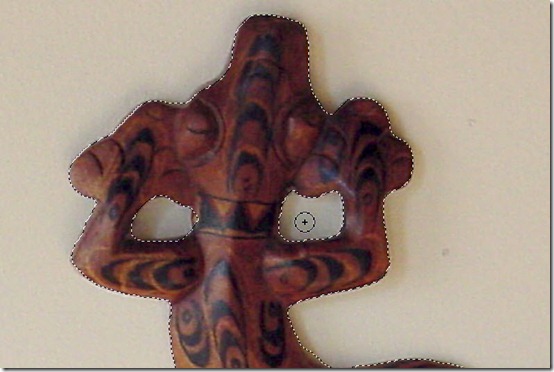




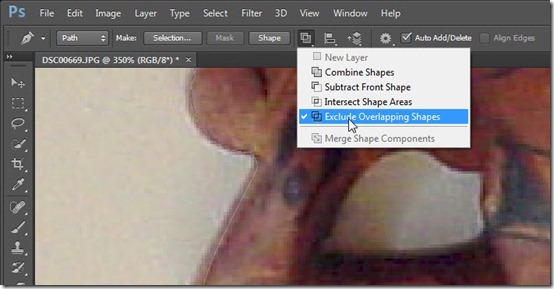



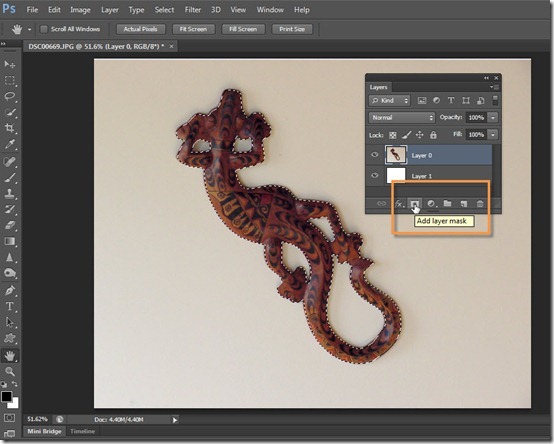
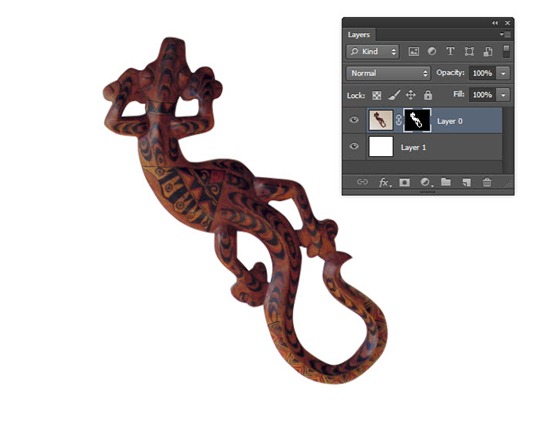
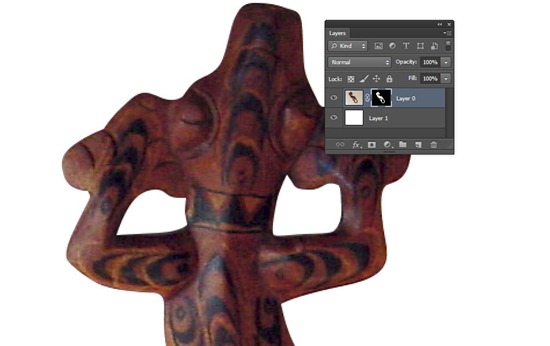



Thank you so much for the time and effort you have put into these tutorials. I value your work and treasure the content.
Hats off to the teachers,
Diane
It is loud and clear
thank you tip squirrel
bonjour. Merci beaucoup pour votre tutoriel et surtout pour votre technique de l’utilisation de outils plume que trouve l’un des plus abouti dans photoshop .Je vous souhaite une bonne journée et a vos collaborateurs.
Dan
thank you so much for your nice tutorial. i will try it
It is indeed a helpful tutorial. U showed how pen tool is used for masking. It seems pretty easy the way you described. We just need to follow the steps.